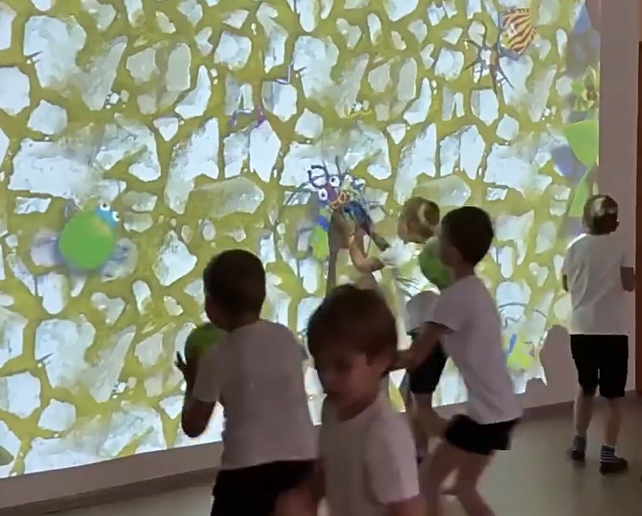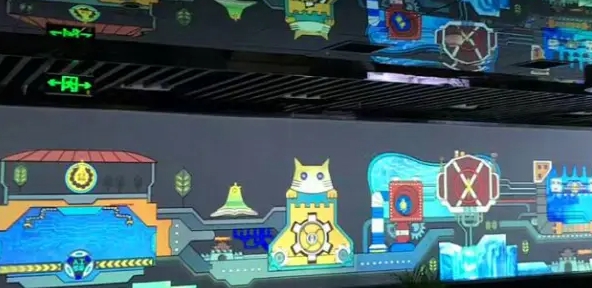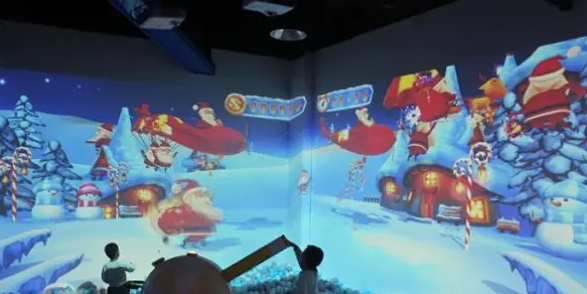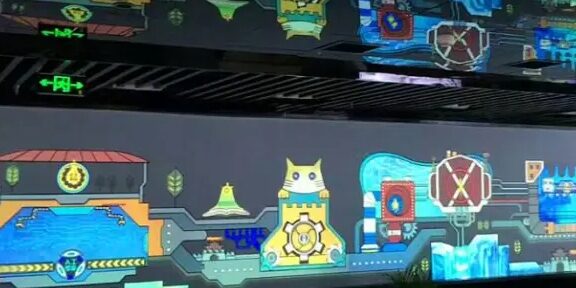In today’s fast-paced world, the way we educate children is evolving rapidly. Traditional methods of learning are being replaced with innovative technologies that not only engage children but also stimulate their curiosity and creativity. One such technology that is revolutionizing early childhood education is interactive LiDAR. By combining LiDAR sensing technology with interactive projection systems, kindergartens can now offer an immersive and exciting learning experience. This article explores how interactive LiDAR is being used in kindergartens to create fun, educational environments that captivate young learners.

What is Interactive LiDAR Technology?
Interactive LiDAR technology is a cutting-edge advancement that uses LiDAR sensors to detect motion, touch, and gestures. When combined with interactive projection systems, it allows children to engage directly with projected content on walls, floors, or tables. Unlike traditional touchscreen technology, LiDAR-based systems can detect multiple touch points simultaneously, enabling several children to interact with the content at once, creating a collaborative and dynamic environment.
Key Applications of Interactive LiDAR in Kindergartens
Interactive LiDAR technology in kindergartens is used in a variety of ways, all aimed at enhancing the learning experience through play and creativity. The key applications include:
- Fun Learning Experiences
Interactive projection systems with LiDAR sensing can merge fun activities with educational content. For example, children can learn about animals, plants, and numbers through games where they interact with projected images. This hands-on learning style allows them to absorb information in a more engaging and enjoyable manner. - Creative Teaching
Interactive LiDAR helps bring educational content to life. Imagine a child watching as a tree grows, animals come to life, or colors appear as they move their hands. These visual experiences stimulate their curiosity and foster a desire to explore the world around them. - Interactive Games
LiDAR-based interactive projection games are a fantastic way for children to learn while playing. By using gestures or touch, children can participate in games that are both educational and entertaining. For instance, they can touch projected elements to trigger responses or use body movements to guide characters through the game. This makes learning feel like play, which is the best way to engage young learners.

Forms of Interactive LiDAR in Kindergartens
The flexibility of interactive LiDAR technology allows it to be used in various forms to suit different educational needs. Here are some popular formats in which interactive LiDAR can be applied in kindergartens:
- Floor Interactive Projection
Floor-based interactive projections are often used for games and activities that require movement. Children can jump, run, or step on projected images, which respond to their actions. This promotes physical activity while teaching social skills and problem-solving. A great example is a game where children step on projected animals, and they must match them with their names or sounds. - Wall Interactive Projection
Wall projections are ideal for creative activities that stimulate children’s imagination. They can draw, play games, or explore educational content projected onto the wall. Interactive LiDAR ensures that their movements are accurately captured, allowing for seamless interaction. These types of systems can also enhance aesthetic and cognitive development by displaying visually appealing content. - Table Interactive Projection
Interactive projections on tables can be used for focused activities that require fine motor skills. This type of projection is perfect for learning activities such as sorting shapes, numbers, or colors. With LiDAR technology, children can interact with the projected images by simply touching or gesturing above the table, making it intuitive and easy for young learners to use.

Real-World Examples of Interactive LiDAR Applications in Kindergartens
- Magic Wall
A “magic wall” can turn any plain surface into an interactive learning tool. Children can touch or move near the wall, and it reacts by changing the displayed content, creating an enchanting and immersive experience. This could be as simple as lighting up shapes or as complex as creating a fantasy world where children’s movements dictate what happens next. - Magic Ball Toss
In this interactive game, children can throw colorful balls (such as ocean balls) towards a projected screen where the balls interact with animated elements. These interactions create visually exciting feedback, such as triggering sounds, animations, or transformations of the images. This type of game fosters teamwork, hand-eye coordination, and critical thinking.
Advantages of Multi-Touch LiDAR Technology in Kindergarten Applications
One of the main benefits of interactive LiDAR technology is its ability to support multi-touch interactions, allowing several children to engage with the system simultaneously. Below are some specific advantages:
- Increased Touch Points
With multi-touch LiDAR technology, the system can detect and respond to multiple touch points, allowing for a richer, more dynamic learning experience. This feature is perfect for group activities where children can collaborate on tasks and games in real-time. It’s particularly effective in interactive learning scenarios where collaboration is key. - Strong Adaptability
Interactive LiDAR technology works well in any type of environment, whether it’s a well-lit classroom or a dimly lit space. It is highly resistant to light interference, ensuring that the projection content remains clear and visible, even in challenging lighting conditions. This makes it suitable for use in a variety of settings, from bright classrooms to more subdued environments. - Simple and Intuitive to Use
The user-friendly nature of LiDAR-based interactive systems means that children can easily adapt to using them without the need for complex instructions. They can intuitively engage with the system using touch, gestures, or movements. This reduces the need for extensive setup or training, allowing teachers and caregivers to focus on guiding the children’s learning experiences. - Easy Installation
Interactive LiDAR systems are straightforward to install and don’t require complicated setups. The LiDAR sensors can be easily integrated with interactive projectors or displays, and the system can be adjusted to fit the specific needs of the classroom or activity. Additionally, the system doesn’t take up much space, making it ideal for use in environments where space is limited.
Conclusion: A New Era of Learning
Interactive LiDAR technology is changing the way children learn by combining education and play in ways never seen before. By enabling children to engage with educational content through touch and movement, it fosters creativity, curiosity, and collaboration. Whether it’s through fun learning experiences, creative teaching methods, or interactive games, LiDAR-based interactive projections are setting the stage for a new era of early childhood education.
With the increasing popularity of this technology, it’s clear that interactive LiDAR has the potential to transform educational environments for the better. By providing children with hands-on, engaging learning experiences, we can help them develop key skills that will serve them well in their academic and personal lives.
If you’re looking to enhance your kindergarten’s educational experience, consider integrating interactive LiDAR technology with projection systems. CPJ ROBOT specializes in LiDAR and interactive technology solutions, offering customizable systems that can be tailored to meet the specific needs of your educational environment. Contact us today to learn more about how our products can help revolutionize your classroom!







